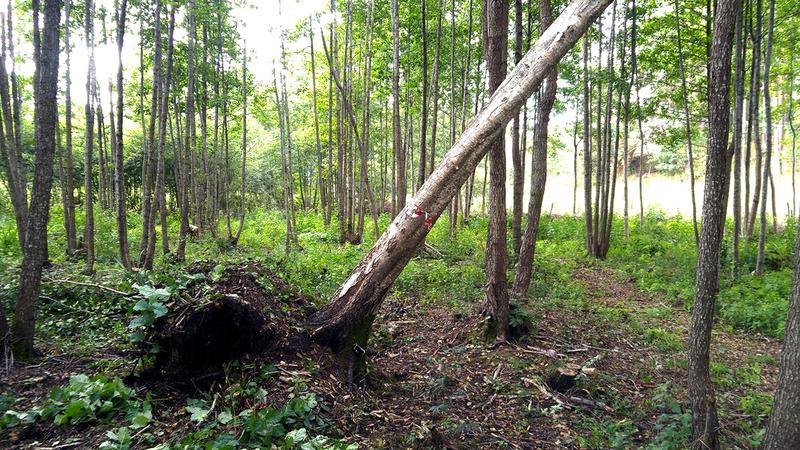
In urbanized areas, wind disturbances can be intensified by anthropogenic stresses under which trees may become hazardous, creating serious threats and damages to nearby targets. Therefore, species with notably lower both wood mechanical properties and compartmentalization, such as pioneers, are considered to have higher wind damage risk if subjected to unfavorable growing conditions.
Eurasian aspen (Populus tremula L.) and silver birch (Betula pendula Roth.), are frequently found in both urban and peri-urban forests in Northeastern and Central parts of Europe, which strengthen the necessity for the evaluation of mechanical stability of such species. Therefore, static pulling tests were performed to compare the mechanical stability of the studied species in both urban and peri-urban forests.
The loading resistance of the studied species differed, with birch being more stable than aspen, indicating aspen to be more prone to wind damage. Additionally, the mechanical stability of birch did not differ between trees growing in urban and peri-urban forests, suggesting static pulling tests are a suitable method for comparing trees from completely different growing conditions.
Original scientific publication
KRIŠĀNS, Oskars, Linda ČAKŠA, Roberts MATISONS, Steffen RUST, Didzis ELFERTS, Andris SEIPULIS und Āris JANSONS, 2022. A Static Pulling Test Is a Suitable Method for Comparison of the Loading Resistance of Silver Birch (Betula pendula Roth.) between Urban and Peri-Urban Forests. Forests. 16 Januar 2022. Bd. 13, Nr. 1, S. 127. DOI 10.3390/f13010127